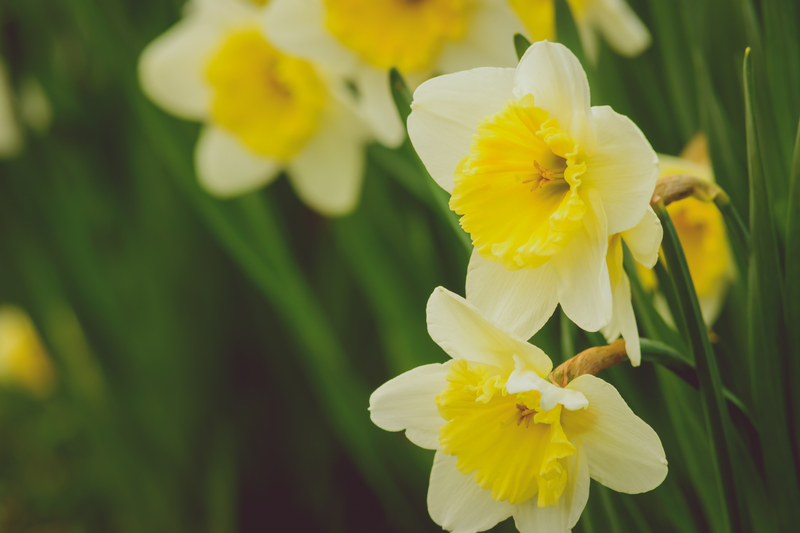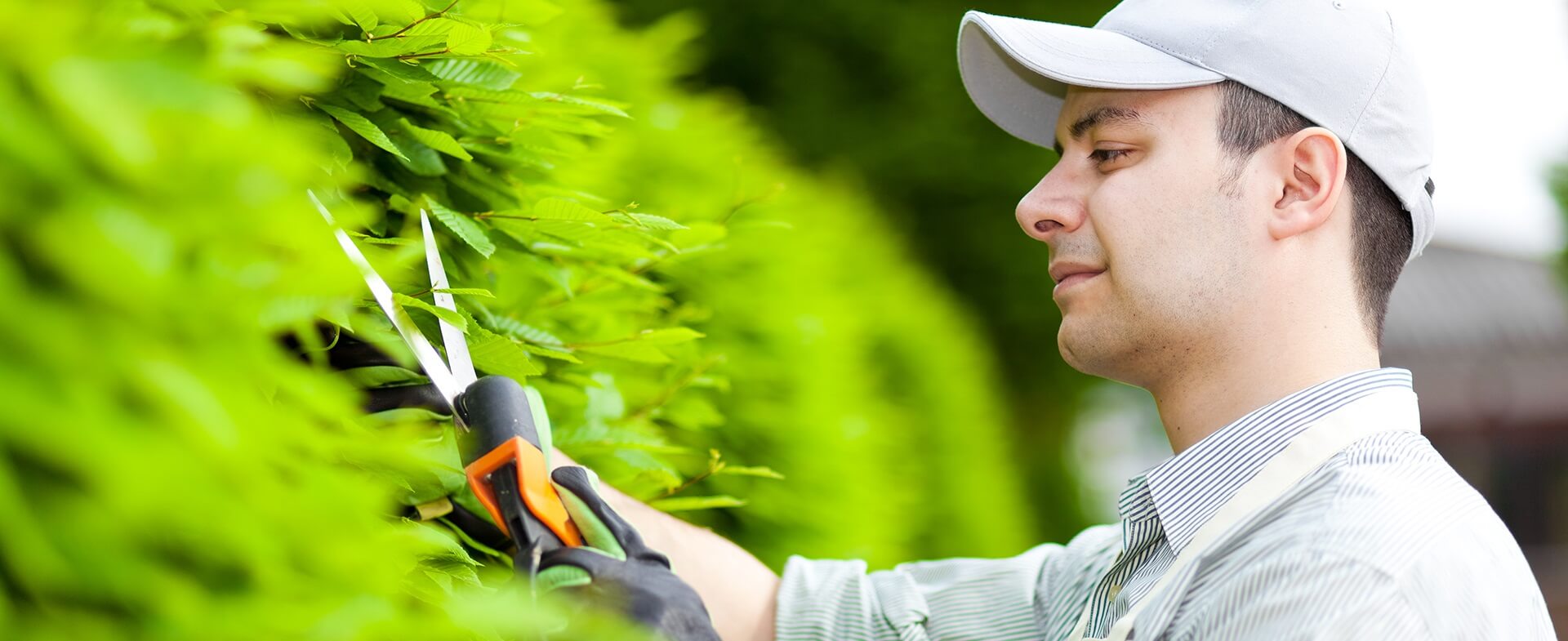Planning a Secure and Enjoyable Garden for Children
Posted on 02/06/2025
Planning a Secure and Enjoyable Garden for Children
Designing an outdoor space tailored for children requires a careful balance of safety, creativity, and learning opportunities. A secure and enjoyable garden for children fosters physical activity, supports mental well-being, and inspires young imaginations. In this comprehensive guide, discover key steps, tips, and design tricks to help you plan a garden that is both safe and fun--transforming your outdoor area into an exciting, worry-free play haven.

Why Plan a Child-Friendly Garden?
Gardens provide enriching sensory experiences for children, fueling curiosity, and offering spaces to explore. By planning a secure and enjoyable kids' garden, adults can:
- Foster healthy play habits through outdoor activities.
- Encourage learning about nature, plants, and life cycles.
- Provide spaces for creativity and social interaction.
- Enhance emotional and physical development in a safe outdoor environment.
- Spend quality family time outdoors with peace of mind.
Key Principles in Creating a Safe Garden for Kids
Whether you have a small courtyard or a spacious backyard, implementing the following principles will ensure your children's garden is secure while still capturing their imagination:
- Visibility: Design the garden so adults can easily supervise play areas.
- Smooth surfaces and boundaries: Reduce fall risks by ensuring paths are level and installing clear, secure boundaries.
- Non-toxic plants: Only plant species that are safe if touched or ingested by youngsters.
- Appropriate scale: Choose equipment and features that match children's heights and abilities.
- Secure storage: Keep tools, chemicals, and fertilizers locked away from curious hands.
Designing a Secure Kids' Garden Step by Step
Thoughtful planning for a secure and enjoyable garden for children incorporates practical safety considerations without compromising on fun. Below, explore the steps to achieve the ideal combination.
Step 1: Conduct a Safety Audit
Before you start designing, walk through your garden and note:
- Trip hazards, such as loose paving stones or exposed roots.
- Sharp objects or rusty tools left in the soil.
- Open access to driveways or streets.
- The presence of any toxic plants or shrubs with thorns.
- Areas with standing water or ponds that may pose drowning risks.
Address all hazards before proceeding to ensure a truly kid-friendly space.
Step 2: Create Safe Boundaries
Fencing plays a vital role in keeping children secure:
- Select smooth, sturdy fencing with no gaps or sharp edges.
- Ensure gates can be securely locked and are not easily opened by adventurous youngsters.
- If possible, use fences around specific play areas to increase child safety.
Step 3: Plan Age-Appropriate Zones
Consider your children's ages and interests. Break the garden into distinct zones for different types of activities:
- Exploration Zones: Areas for digging, collecting bugs, or observing birds.
- Active Play Zones: Space for running, climbing, and playing ball games.
- Quiet Zones: Shaded nooks for reading, crafts, or gentle sensory play.
- Water Play or Sandpit Areas: Place these within easy view and choose quick-draining, soft sand to reduce mess and accidents.
By segmenting your garden for children into these areas, you can better supervise and allow kids to enjoy a wider variety of activities.
Step 4: Choose Child-Safe Plants and Materials
The heart of any garden is its greenery, but with kids, plant selection demands caution. Avoid species known to be poisonous, prickly, or allergenic. Some safe, kid-friendly options include:
- Sunflowers (easy to grow and fascinating for children to watch blossom)
- Nasturtiums (edible flowers with bright colors)
- Snapdragons, pansies, marigolds, and calendula
- Herbs like basil, mint, and chives--safe to touch and taste
- Strawberries or bush tomatoes in designated beds
Material choices matter too. For surfaces and pathways, pick non-slip, soft materials like bark, rubber mulch, or grass over hard concrete. Ensure all wooden structures are well-maintained to avoid splintering, and opt for non-toxic paints and finishes on garden furniture.
Step 5: Install Safe and Stimulating Play Equipment
Outdoor play equipment should stimulate activity but never at the expense of safety:
- Choose swings, slides, or climbing frames with rounded edges and sturdy construction.
- Make sure all equipment is anchored securely in place and check for loose bolts or sharp protrusions regularly.
- Install equipment on a soft surface, such as play bark, rubber mats, or deep lawn, to cushion falls.
- Ensure there is plenty of clearance space around and above the equipment.
- Supervise young children whenever they use play structures.
Step 6: Provide Shelter and Shade
Children can spend hours outdoors, so ensuring your garden has adequate shade is essential. Consider:
- Planting trees with dense foliage (but be mindful of falling branches).
- Installing pergolas, play tents, or canopies.
- Using large garden umbrellas for flexible shaded areas.
UV protection keeps skin safe, and shaded spaces also enable quiet time or creative play away from the heat.
Step 7: Plan for Secure Storage
Every fun and functional children's garden requires tools and supplies. Secure sheds and storage boxes with child-proof locks keep:
- Garden tools, hoses, sharp implements, and chemicals out of reach.
- Bikes, scooters, and balls neatly organized to avoid clutter and tripping risks.
- Create a dedicated, reachable area for children’s safe gardening tools and toys.
Encouraging Learning and Adventure in a Child-Friendly Garden
Integrate Sensory Elements
A playful children's garden engages all five senses:
- Plant fragrant flowers and herbs like lavender, rosemary, and mint.
- Add textured plants such as lamb's ear or grasses to touch.
- Install windsocks, chimes, or water features for sound stimulation.
- Include edible plants to taste and soil or sand boxes for tactile play.
This creates a sensory-rich environment that supports both sensory processing and imaginative play.
Involve Children in Garden Planning and Maintenance
Let kids help design their garden areas:
- Allow them to pick seeds or plants for a bed of their own.
- Encourage them to name garden zones or features (e.g., "Fairy Path" or "Dinosaur Den").
- Teach children about plant care, composting, and the role of pollinators.
Empowering children to nurture their garden fosters responsibility and a love for the outdoors.
Add Creative and Educational Features
- Create mini vegetable plots or raised beds for children to work in.
- Add a bug hotel, bird feeders, or butterfly habitats to attract wildlife and spark curiosity.
- Incorporate art: Paint stones, make garden decorations, or try nature-themed crafts.
- Install chalkboards or paint fences and paths with blackboard paint for outdoor drawing and learning.
These elements offer ongoing opportunities for fun, learning, and family bonding.
Maintaining a Safe and Fun Garden for Kids
Regular Safety Checks
A secure children's garden must be regularly inspected:
- Check fences and gates for gaps or damage.
- Inspect play equipment and furniture for wear, splinters, or loose parts.
- Remove litter, sharp stones, or animal waste promptly.
- Ensure water features are clean, shallow, or appropriately fenced.
- Seasonally review and refresh soft surfaces and mulch to maintain cushioning.
Sun Safety and First Aid
- Keep hats and sunscreen handy for spontaneous playtime.
- Have a first-aid kit accessible for minor scrapes or stings.
- Teach children the importance of protective clothing and hydration when outdoors.
Adapt as Children Grow
The needs and safety requirements of children change as they age. Adapt your garden by:
- Updating play equipment to suit new skill levels.
- Introducing new zones or challenges, like obstacle courses or dens.
- Adding more responsibility with tasks like weeding, watering, or pruning.
Continually evolving your garden ensures it remains engaging and stimulating for older children.

Garden Safety Checklist
- Fencing and gates: Secure, childproof, and intact
- Tools and chemicals: Safely stored and locked away
- Paths: Even, well-lit, and free from trip hazards
- Plants: Non-toxic, no sharp thorns or sap
- Water features: Childproofed or fenced
- Surfaces: Soft and non-slip under all play equipment
Conclusion: Growing Memories in a Safe Children's Garden
Planning and creating a safe and enjoyable garden for children is a rewarding project that pays off with endless hours of family fun, adventure, and learning. By addressing safety from the outset, selecting age-appropriate features, and fostering a sense of ownership and wonder, your outdoor space will become a cherished playground and classroom all year round.
With careful planning, the right materials, and a bit of whimsy, you'll provide an environment where children can learn, play, and thrive--while giving parents the peace of mind that their young explorers are secure. The result is a garden that truly grows with your family, planting seeds of happiness and lasting memories for years to come.

